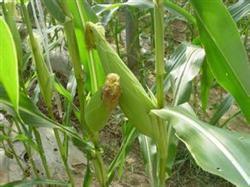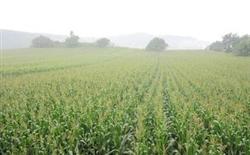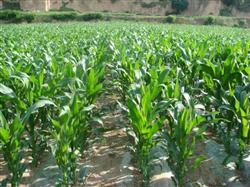Cultivation techniques of Spring Maize and late Rice

Spring maize + late rice cultivation mode refers to the cultivation mode of spring maize and late rice instead of early rice due to spring drought. The advantages of spring corn + late rice cultivation mode: First, most of the dry fields lacking irrigation conditions can adopt this mode, thus reducing early planting and waste, ensuring the area of grain planting. Second, the price of corn is slightly higher than that of rice, which is slightly higher by 5~10% in the current market situation. Third, the yield of corn is slightly higher than that of early rice. In the same field and at the same input level, the yield of corn is 10% higher than that of rice. Fourthly, the management requirements of planting spring corn are relatively extensive, and the input cost of labor and agricultural materials required is relatively low, which can be popularized and applied in large areas. Fifthly, spring corn is generally sown at the end of January and early February, harvested from the end of May to June, about 20 days earlier than early rice harvest period, which can not only avoid the harm of "dragon boat water", but also strive for initiative for variety selection and production season arrangement of late rice, and also create more favorable conditions for winter planting production. 1. Main cultivation techniques of spring maize Corn planting can be adopted in conventional tillage and no-tillage planting. (a) Selection of fine varieties. In order to improve yield and efficiency, hybrid corn is generally selected for planting, and waxy corn or sweet corn for fresh market can also be planted. Spring corn should be planted with medium-mature varieties. The varieties suitable for planting in our city mainly include: Dika 007, Zhengda 619, Guidan 22, Guidan 30, Jindan series, Nongda 108, Yuyu 30, etc.; waxy corn varieties mainly include: Suyunuo 1, Guinuo 2006, etc.; sweet corn varieties mainly include: Huazhen, Jinzhen, Taizhen, Xiantian 6, etc. (2) Soil preparation and weeding. For regular cultivation, the suitable ploughing period should be mastered, the field should be ploughed, deeply ploughed more than 30 cm, and the soil preparation should be 1~1.1 meters. No tillage planting does not need to plough the field, but needs to carry out pre-sowing weeding, according to 1~1.1 meters of furrow can be started. The specific method of weeding before sowing is as follows: 7 to 9 days before sowing, 20%"Gramoxone" 250 to 300 ml, or 20%"Paraquat" 250 to 300 ml, or 10%"glyphosate" 1500 to 2000 ml, or "Zero tillage music" 300 to 500 g, or 50%"Acetochlor" 80 to 160 g, mixed with water 50 to 60 kg, evenly sprayed on the whole field. (3) Apply sufficient base fertilizer. Adequate application of basal fertilizer is one of the keys to increase maize yield. Before fertilization, phosphate fertilizer and organic fertilizer should be mixed for one month to improve fertilizer efficiency. Basic fertilizer application: 50 kg phosphate fertilizer +1000 kg farm manure per mu, or 50 kg compound fertilizer containing 15% nitrogen, phosphorus and potassium. (4) Timely sowing. Our city should start sowing in late January and strive to finish sowing in early February. The seed amount per mu is generally about 1.5~2 kg, and it is beneficial to obtain high yield by adopting double-row single-plant planting mode, with row spacing of 33~40 cm, plant spacing of 25~33 cm, and 2 seeds per hole. (v) Field management 1. Seedling management.① Seedling determination in the field: thinning and seedling determination shall be carried out when 4~5 leaves are left. Generally, one seedling shall be reserved for each hole, and 4500~5000 seedlings shall be reserved per mu.② Fertilization: seedling fertilizer is mainly quick-acting fertilizer. After seedling setting, urea is applied 5~6 kg per mu, mixed with water for spraying, and cultivated soil after application. 3. Prevention and control of diseases and insect pests: There are many diseases and insect pests in seedling stage. Pest has ground tiger, armyworm, grubs and mole cricket, often harm seedlings, bite seedlings, should always pay attention to inspection, application poison trap. Disease mainly downy mildew, found diseased plants, should be pulled out in time, concentrated burned. 2. Management of jointing and heading stage. 1. Tapping fertilizer should be applied timely, usually at the beginning of jointing stage. Spring maize should be applied about 30 days after seedling emergence, when seedlings have 7~8 leaves. Generally, urea and potassium fertilizer are applied 8~10 kg per mu, and they are mixed with water for drenching. (2) Heavy application of bud attack fertilizer, when corn appears "big bell mouth", urea and potassium fertilizer are generally applied 10 kg per mu, 7~10 cm away from the base of corn, and after top dressing, soil cultivation is carried out to prevent lodging.③ Control of pests and diseases: The pests in this period mainly include corn borer, armyworm and aphid. The main diseases were leaf spot, sheath blight, smut and stem rot. Must often go deep into the field inspection, found pests and diseases to timely spray control. (vi) Timely harvest Fresh sweet corn, waxy corn, suitable for milk harvest, that is, generally in the female ear after silking pollination, sweet corn 20~24 days, waxy corn 25~30 days harvest. Harvested dry corn generally has bright luster on the surface of the grain, the whole plant presents yellow, and the ear bracts loose and white, that is, harvested at the ripe stage. II. Late rice production Late rice is sown in late June, thrown in mid-late July, heading from the end of September to the beginning of October, and harvesting from the end of October to the beginning of November, which can effectively avoid autumn drought and cold dew wind. The cultivation techniques of late rice are the same as those of normal late rice.
- Prev

Sowing techniques for High yield of Spring Maize
In order to improve the sowing quality of spring sowing corn in Hetao irrigation area, seed selection, fine soil preparation and timely sowing should be done actively, which is very important for preserving the whole seedling and winning a good harvest of spring sowing corn. First, select the good varieties suitable for the right way: according to the heat resources and the actual irrigation area, the ones with growth period of 120-130 days should be selected.
- Next

Planting techniques of fresh Sweet Corn in Spring
To select improved varieties, you can choose sweet corn super sweet No. 3 and super sweet 204, which were popularized and planted last year, or trial planting and demonstration of new varieties such as Dongtian 206. These varieties have high yield, medium growth period, more than 16% sugar content in fresh seeds and good taste in fresh food. Sowing at the right time, cultivating strong seedlings will generally begin to sow around March 15-20.
Related
- The first cup of black tea in spring, the flavor and history of tea gardens in Kenya, Africa
- The computer can not only choose potatoes, but also grow tea rice. AI will grow winter oolong tea champion.
- It is not only the inflated tea bitten by insects, but also engraved with the four seasons tea in Beipu.
- The Oriental Beauty Tea Festival in Zhuxian County takes the stage at the weekend to experience the plus-size feast of oil tea.
- & quot; Oriental Beauty Tea & Exploration of Emei in Hsinchu, the hometown of quot;
- The new variety of strawberry "Tainong 1" dessert is the first choice with mellow aroma. Crimson gorgeous
- History of Tea in Taiwan: from Wild Inner Mountain to Export Tea Garden
- Two types of Taiwan Oriental Beauty Black Tea won the British three-Star Award for Childhood Tea Xiang Zhang Jiaqi changed from pilot to champion tea maker.
- Banana species and varieties: the planting history of Taiwan Xianren banana and dwarf banana is long, is banana disease resistant?
- Coffee planting Technology: Qianjie Coffee from Seedling to harvesting

